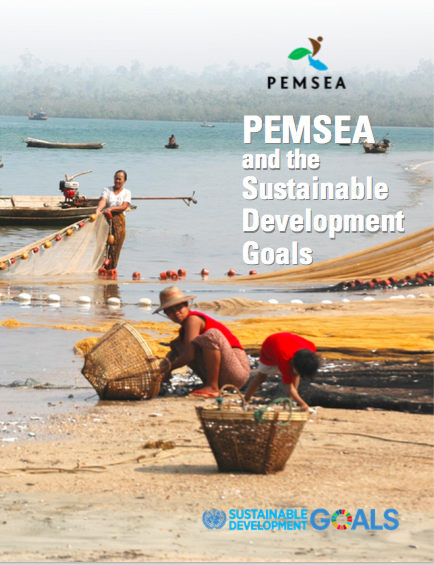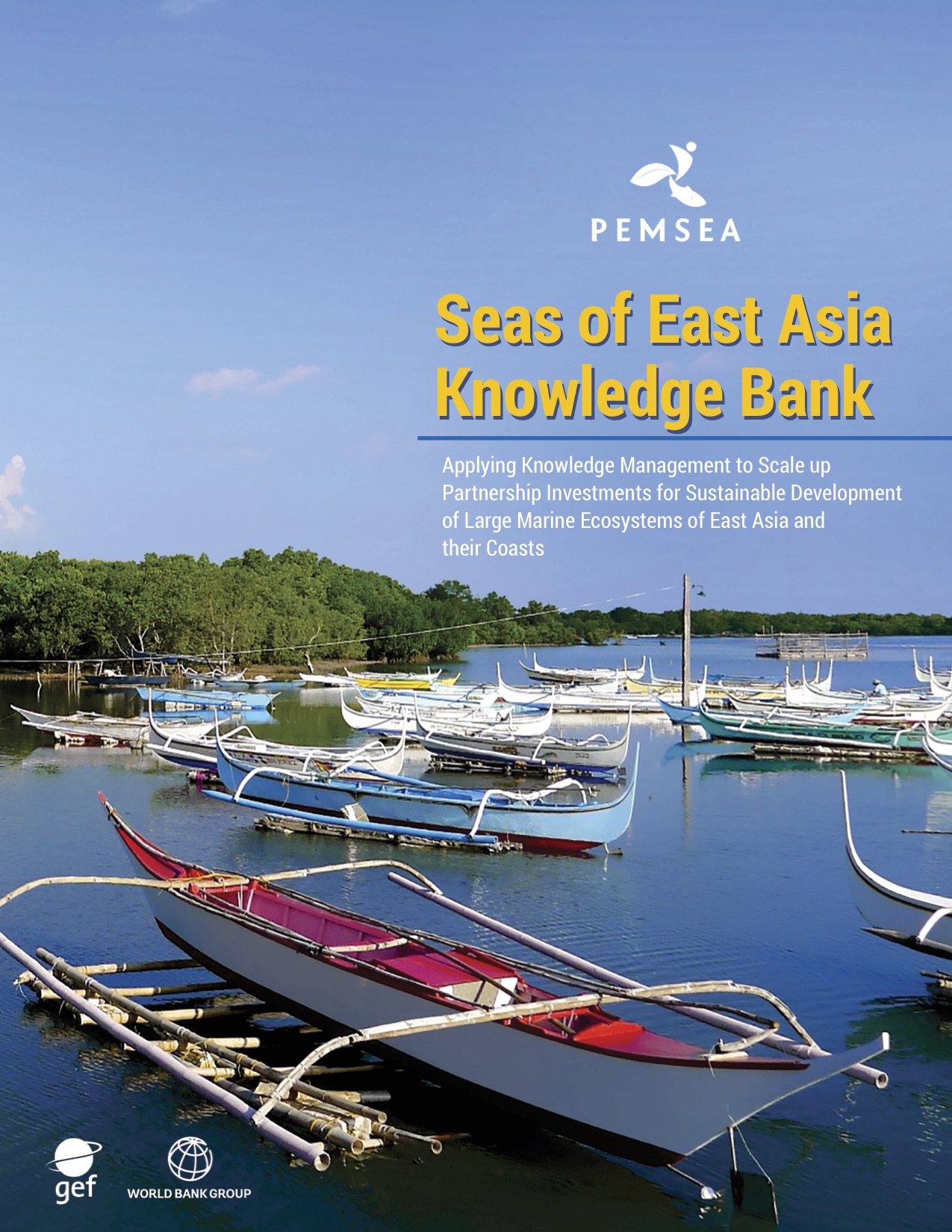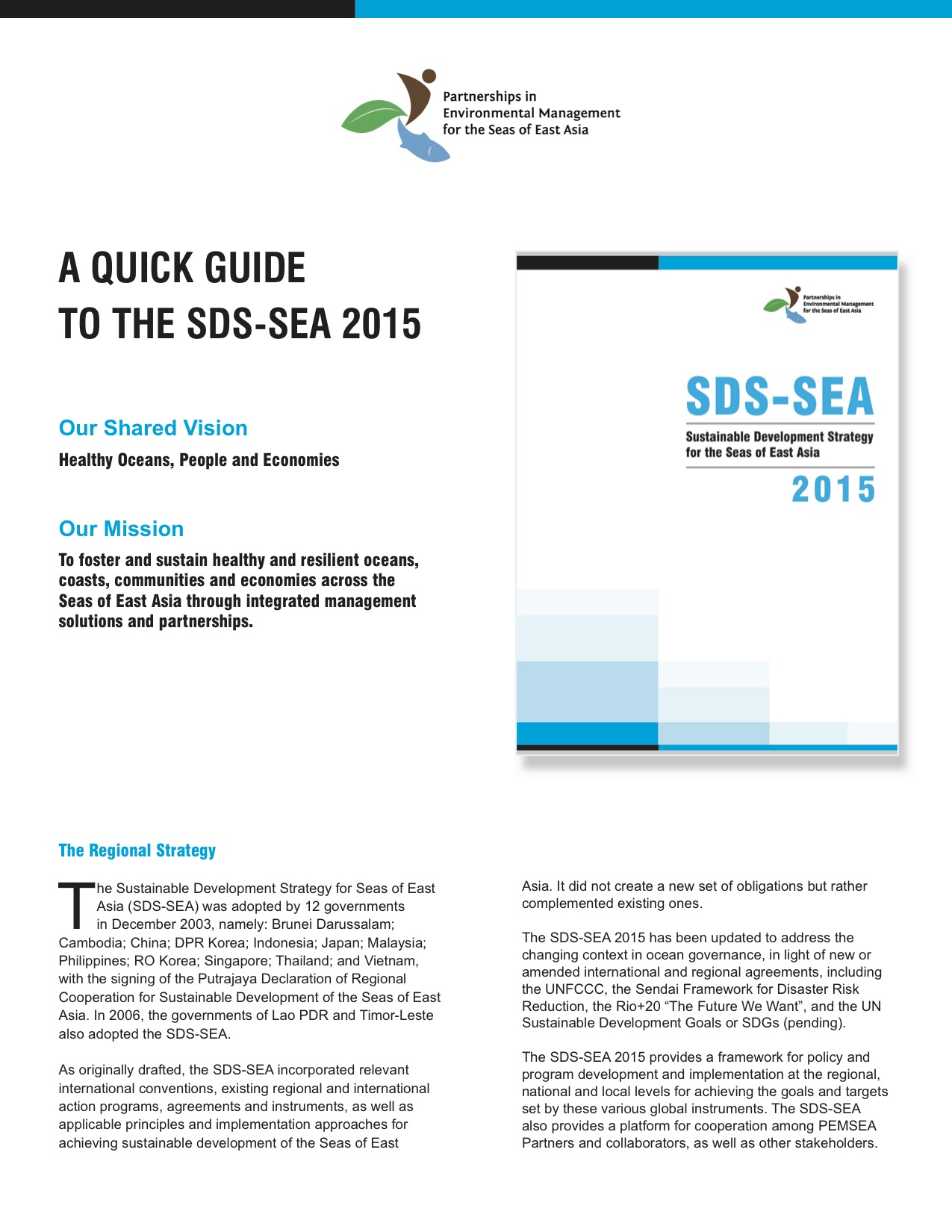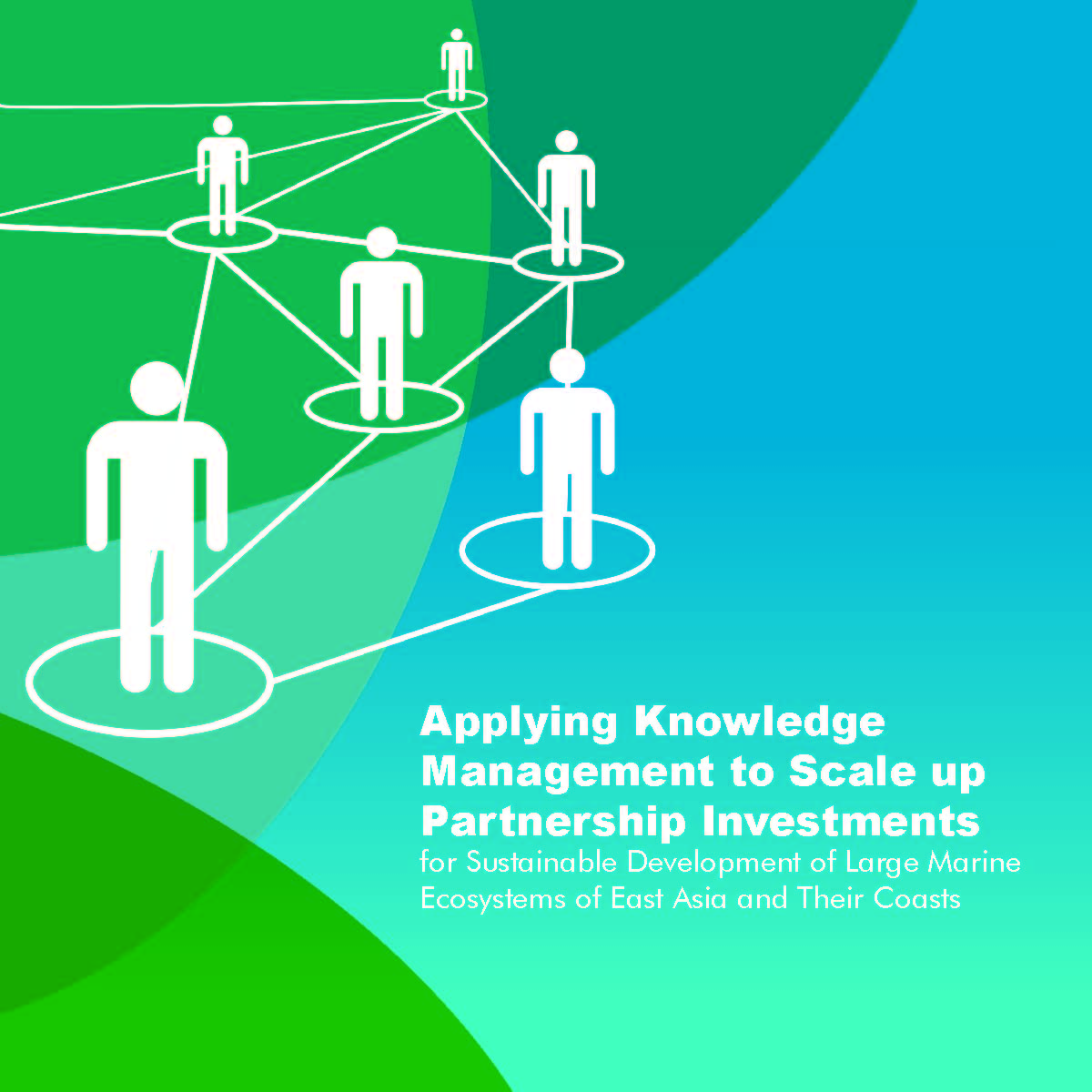
Breadcrumb
-
PEMSEA and the Sustainable Development Goals
Since 2003, the Sustainable Development Strategy for the Seas of East Asia (SDS-SEA) has served as a platform for cooperation and coordinated action among country and non-country partners and collaborators within the framework of PEMSEA, or Partnerships in Environmental Management for the Seas of East Asia. PEMSEA is an international organization specializing in integrated coastal and ocean governance of the Seas of East Asia. It is a partnership arrangement comprised of 11 country and 20 non-country partners with a collective commitment to implement the SDS-SEA.
PEMSEA's main goal is the pursuit of the sustainable development of coasts and oceans through integrated management solutions. The solutions PEMSEA adopts recognize ecosystem health and resiliency and social well-being as integral parts of economic progress. Our vision is HOPE—Healthy Oceans, People and Economies. The Partner Countries strive to attain the SDS-SEA objectives and targets by improving coastal and ocean governance at the local, national and regional levels, scaling up ICM program coverage of the region's coastline, and boosting investments in blue economy.
The Sustainable Development Goals (SDGs), adopted by the UN in September 2015, provide 17 Goals and 169 targets to guide actions globally in key areas where government, the private sector and citizens will have to invest in order to transform economies and prosper within the social and ecological boundaries of the planet. There are a number of obvious synergies between the SDGs and the implementation of the SDS-SEA, in particular SDG 14: Life Below Water, SDG 6: Clean Water and Sanitation, SDG 11: Sustainable Cities and Communities, SDG13: Climate Actions, and SDG 17: Partnerships for the Goals.
There are challenges to achieving the SDGs and full implementation of the SDS-SEA. But PEMSEA Partners are fully determined and committed to overcome these challenges and ultimately to contribute to targets set forth by the SDGs through individual and combined actions aligned with the SDS-SEA.
-
Seas of East Asia Knowledge Bank
The Seas of East Asia Knowledge Bank is a knowledge platform for policymakers, implementers, planners, investors and other concerned stakeholders to scale up the Sustainable Development Strategy for the Seas of East Asia (SDS-SEA) and the Integrated Coastal Management (ICM) implementation at the regional, Marge Marine Ecosystem (LME) seascape, national and local levels. The platform provides access to a comprehensive collection of lessons learned, best practices and other relevant content on coastal ocean governance and management. A number of priority knowledge products and services are accessible through the SEA Knowledge Bank, including an e-library, ICM solutions (help desk) with online access to communities of practice and PEMSEA support networks, directories, a web-based State of Coasts reporting system, a marketplace for projects and moderated forums.
-
PEMSEA Network of Learning Centers (PNLC) [Brochure, 2015]
The PEMSEA Network of Learning Centers (PNLC) maximizes the wealth of expertise on Integrated Coastal Management in the region.
-
East Asian Seas Sustainable Business Network (EAS-SBN) [Brochure, 2015]
PEMSEA plans to help companies navigate the risks and opportunities in an ocean-based blue economy through the East Asian Seas Sustainable Business Network (EAS-SBN).
-
A Quick Guide to the SDS-SEA 2015
Read the SDS-SEA brochure for a short summary on the updated targets, strategies and action programs.
-
Integrated Coastal Management [Brochure, 2015]
Integrated Coastal Management (ICM) addresses the complex problems in coasts and oceans through a holistic approach. It is a management system engaging multiple stakeholders for long term sustainability.
-
Investment Landscape Mapping in East Asia: Integrated Coastal Management and Sustainable Development of Coasts and Oceans [Executive Summary]
This research paper seeks to understand and map current financial funding flows to integrated coastal management (ICM)-related sectors across the grants and investment capital spectrum. The paper identifies regional and country-level trends in ICM funding across ten related industries.
Through a desk review of information and literature available in the public domain, the paper identifies the major funders, programs, areas of investment, types of investors, geographical preferences, and sizes of the investments deployed across ICM-related sectors in select countries of East Asia. The paper also analyzes the requirements, strategies, and expectations of investors and donors — as gleaned from information available in the public domain and Internet sources.
-
Regional Review: Implementation of the Sustainable Development Strategy for the Seas of East Asia (SDS-SEA) 2003-2015 [Executive Summary]
The Regional Review highlights the overall progress of PEMSEA's 12 partner countries on regional and national levels. The review measures the implementation of the Sustainable Development Strategy for the Seas in East Asia using PEMSEA's Framework.
-
Applying Knowledge Management to Scale up Partnership Investments for Sustainable Development of Large Marine Ecosystems of East Asia and Their Coasts
The project, Applying Knowledge Management to Scale up Partnership Investments for Sustainable Development of Large Marine Ecosystems of East Asia and Their Coasts, addresses the need for the conversion and integration of new information and knowledge into innovative policies and development programs, scaling up and replicating initiatives, and increased commitments of resources and new investments by the public and private sectors. The project will facilitate interaction among policymakers, implementers, networks and investors, as well as address gaps in necessary skills and services to move from policy and planning into actions and investments through intergovernmental arrangements and communities of practice at the regional, national and local levels. The project objective is to enhance the capacity and performance of investments in the sustainable development of large marine ecosystems (LMEs) and coasts in the East Asian Seas (EAS) region through knowledge and experience sharing, portfolio learning and networking.


![PEMSEA Network of Learning Centers (PNLC) [Brochure, 2015]](/sites/default/files/2023-11/PEMSEA%20Network%20of%20Learning%20Centers%20%28PNLC%29%20%5BBrochure%2C%202015%5D.jpg)
![East Asian Seas Sustainable Business Network (EAS-SBN) [Brochure, 2015]](/sites/default/files/2023-11/East%20Asian%20Seas%20Sustainable%20Business%20Network%20%28EAS-SBN%29%20%5BBrochure%2C%202015%5D.jpg)

![Integrated Coastal Management [Brochure, 2015]](/sites/default/files/2023-11/Integrated%20Coastal%20Management%20%5BBrochure%2C%202015%5D.jpg)
![Investment Landscape Mapping in East Asia Integrated Coastal Management and Sustainable Development of Coasts and Oceans [Executive Summary]](/sites/default/files/2023-11/Investment%20Landscape%20Mapping%20in%20East%20Asia%20Integrated%20Coastal%20Management%20and%20Sustainable%20Development%20of%20Coasts%20and%20Oceans%20%5BExecutive%20Summary%5D.png)
![Regional Review Implementation of the Sustainable Development Strategy for the Seas of East Asia (SDS-SEA) 2003-2015 [Executive Summary]](/sites/default/files/2023-11/Regional%20Review%20Implementation%20of%20the%20Sustainable%20Development%20Strategy%20for%20the%20Seas%20of%20East%20Asia%20%28SDS-SEA%29%202003-2015%20%5BExecutive%20Summary%5D.png)
